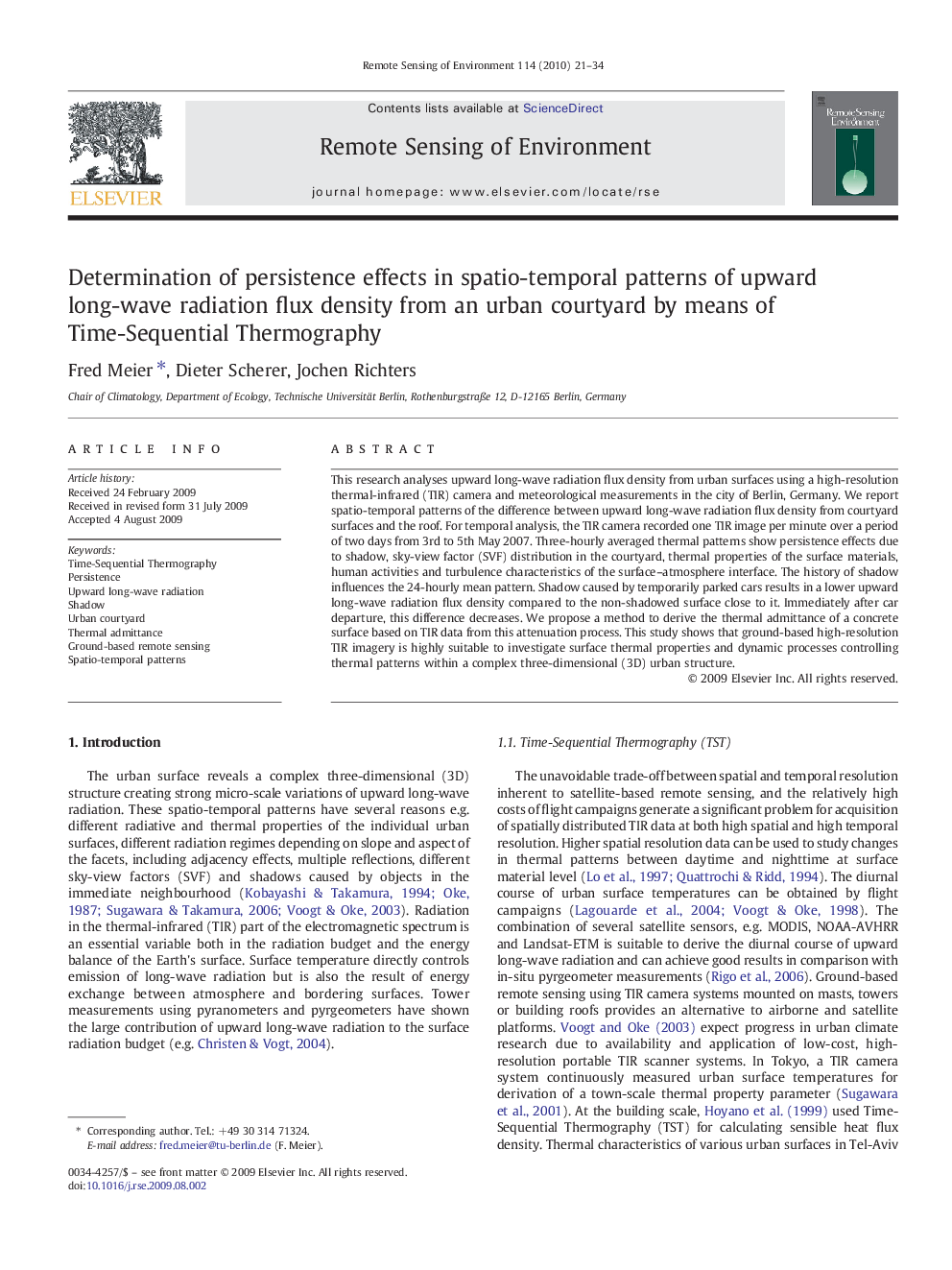| Article ID | Journal | Published Year | Pages | File Type |
|---|---|---|---|---|
| 4459925 | Remote Sensing of Environment | 2010 | 14 Pages |
This research analyses upward long-wave radiation flux density from urban surfaces using a high-resolution thermal-infrared (TIR) camera and meteorological measurements in the city of Berlin, Germany. We report spatio-temporal patterns of the difference between upward long-wave radiation flux density from courtyard surfaces and the roof. For temporal analysis, the TIR camera recorded one TIR image per minute over a period of two days from 3rd to 5th May 2007. Three-hourly averaged thermal patterns show persistence effects due to shadow, sky-view factor (SVF) distribution in the courtyard, thermal properties of the surface materials, human activities and turbulence characteristics of the surface–atmosphere interface. The history of shadow influences the 24-hourly mean pattern. Shadow caused by temporarily parked cars results in a lower upward long-wave radiation flux density compared to the non-shadowed surface close to it. Immediately after car departure, this difference decreases. We propose a method to derive the thermal admittance of a concrete surface based on TIR data from this attenuation process. This study shows that ground-based high-resolution TIR imagery is highly suitable to investigate surface thermal properties and dynamic processes controlling thermal patterns within a complex three-dimensional (3D) urban structure.
